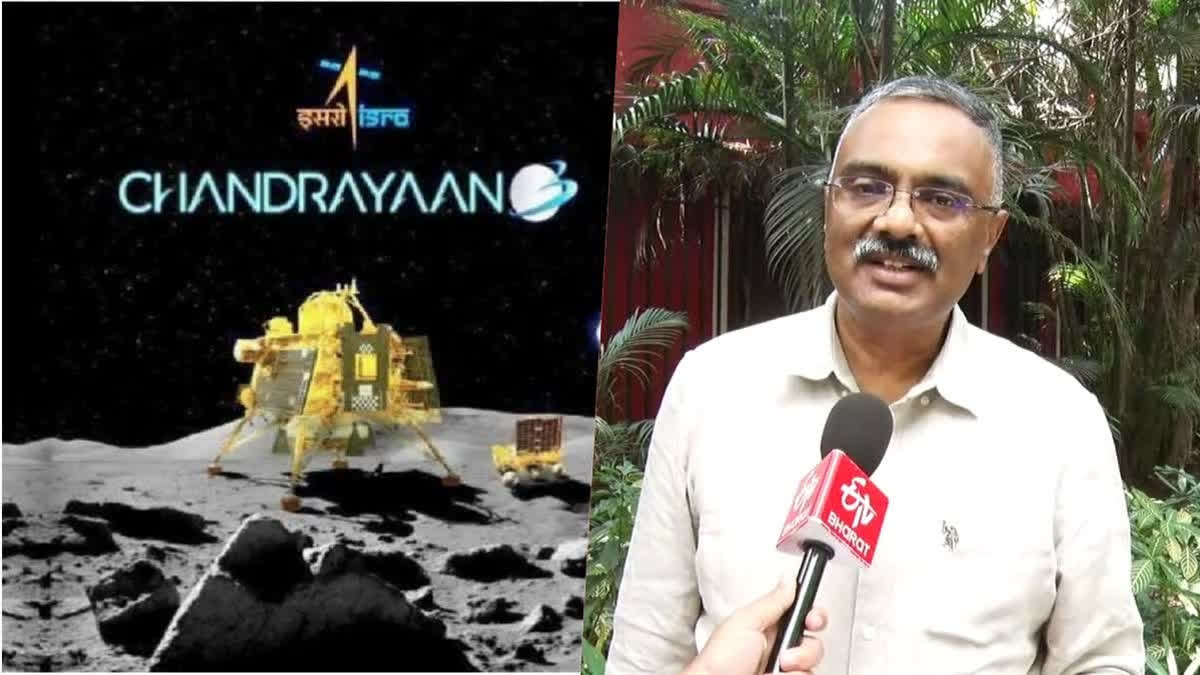Bengaluru (Karnataka): Chandrayaan 3, which millions of Indians have been waiting for, has reached its final stage. The whole of India is waiting to witness the moment when the Vikram lander will land on the surface of the moon. This whole process of twenty minutes will be important for the scientists of ISRO and the landing process will be done in four stages. Space and defense expert Girish Linganna shared with ETV Bharat what the stages of the last 20 minutes will be like.
"Today the Chandrayaan-3 Mission has come into the final phase. It means that the lander is at a point 25x134 in the elliptical orbit. And the lander will be at a speed of 1,600 meters per or 1.6 kilometres per second. Now, bringing down the lander from 1.6 kilometres per meter to 0 meters per second is a challenge," Linganna said.
Also read:As 'Vikram' heads for moon, Kartikeya and Mallika Sarabhai remember their father
According to Linganna, after varying all the sensors and instruments, all the scientists, would be working on various parameters. "Once they (scientists) are through, they will give a command. He then explained that the final command for Chandrayaan-3 would be given from the Indian Space Research Organisation's Command Centre in Bengaluru and once that reaches the satellite at 5.47 PM, it goes to a power-descent mode.
Linganna further said that power-dissent mode means it is an autonomous mode, where nobody has control over the lander, and it happens in four phases. Girish Linganna then explained the stages:
Rough breaking stage: Vikram Lander 30 km from the landing site is in a distant orbit. In this case, the landing speed is 1.68 km per second. Starting from this stage it will be reduced to 690 seconds. The Vikram lander will be thoroughly inspected during this time. It is at this stage that the lander which is orbiting horizontally above the moon, should be rotated to a vertical position and taken towards the moon. Horizontal velocity in 358 m/s. The speed of downward motion is 61 m/ s. The soft-landing was not possible due to a technical fault at the last moment.
